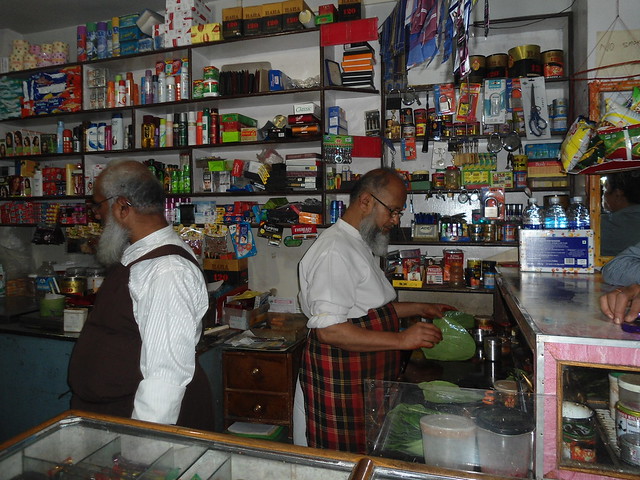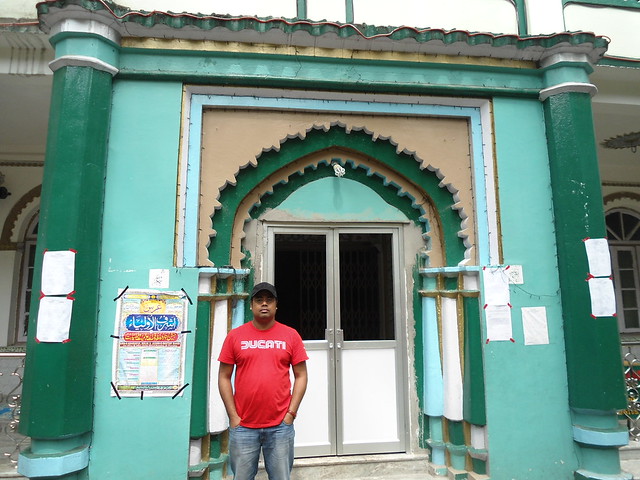By Dr. Syed Ahmed for TwoCircles.net,
Gangtok: Few days back, an important work took me to Sikkim, the small State that nestles between the peaks of the eastern Himalaya. While staying at the capital city Gangtok I came across a small majid close by the city bus-stand. Near the masjid I met two bearded Muslims running a big paan shop. I talked to one of the Muslims at the paan shop, named Mohd. Rauf, to know more about the Muslims in the State. Rauf said he came to Gangtok from Bihar in the early 70s in search of livelihood. He was later joined by his brother, who also works at the paan shop.
I inquired about the settlement of Muslims in Gangtok and other parts of Sikkim. He informed me that there is no indigenous Muslim population in the State. “All the Muslims in Sikkim came from outside, mainly from Bihar, UP and West Bengal in search of work. Around 80 per cent of the Muslims are from Bihar, while the rest are from West Bengal and UP. There are around ten thousand Muslims in the capital city. There are also Muslims in Rangpo, Ranipool, Rinnak, Rangili, Jothang, Namchi, Gyalshing, Mangan, Simtam, etc. In all, there must be around twenty thousand Muslims in Sikkim. As the State Government does not allow outsiders to buy land here the Muslims and in fact all the outsiders stay in rented houses. I have also been staying in a rented apartment with my brother all these years,” Rauf said.

Md. Rauf and his brother at the paan shop
“Majority of the Muslim population are temporary migrant workers. Many of these Muslims engage in construction works. The rich local population engages skilled constructor workers and manual labourers for the construction of their residential buildings. The State Government too engages these people for building roads, office building, dams, constructing roads on the hills, etc. Many Muslims also do petty business. They open small shops. Some Muslims are popular here as tailors. A few early Muslim settlers are working as Government employees, mainly as teachers and policemen. Some have also married the local women,” Rauf added.
Later I entered the masjid complex and talked to the Imam, Maulana Asgar Ali, who hails from Madhubani in Bihar. The Imam further informed, “There is only one masjid in Gangtok. This area is called Apar Arithang. There are around six to seven thousand Muslims here. The masjid was constructed in 1942-43. It was then constructed with wood. It is said that a wealthy Tibetian Muslim from Ladakh, named Sabila Sardar had acquired the land for the masjid from the local ruler. The descendants of Sabila Sardar still live in Gangtok. One of his grandsons named Saeed is running a big shop at the MG Road. There are very few Tibetan Muslims here in Gangtok. However, there are quite a large number of Tibetan Muslims in Kalimpong. They are all wealthy businessmen. There are another 8 more masjids in different parts of Sikkim. There are also prayer houses for other religions too. There is a Gurudwara at Deorali near Gangtok town.”

The masjid at Gangtok
“I came here to work as Imam few years back. I get five thousand rupees per month. The masjid is managed by public subscription. We have organized a body called Anjuman-e-Islamia, Gangtok, to manage the masjid and the Muslims here. It is a registered body. The jurisdiction of the Anjuman is fixed from Tadong to Vajra, Balwakhani and Chandmari to by-pass. There is no madrasa here. The Muslims have realized the need of having a madrasa. We have started the construction of the madrasa building here in the masjid complex,” the Imam added.
Sikkim is renowned for its scenic beauty, rich flora and fauna and ethnically varied population. The State with an area of 7096 sq. km. has a population of just around 6 lakh. The 8586 meters high Kanchenjunga, the third highest mountain in the world, dominates the skyline of Eastern Sikkim. Sikkim has more than seventy Buddhist monasteries, the oldest dating back to the 1700s. The State has 660 species of orchids. And it is famous for the mask dance performed by Lamas in Gompas.

The author at the masjid
Majority of the State’s population are of Nepali ethnic origin. The native Sikkimese consist of the Bhutias, migrated from the Kham district of Tibet in the 14th century, and the Lepchas, who probably entered Sikkim from Tibet well before the 8th century and brought Lamaistic Buddhism. Migrant resident communities include Biharis, Bengalis and Marwaris.
Hinduism is the State’s major religion (61%), followed by Buddhism (28%) and Christians (7%). The minority religious communities, consisting of Muslims, Sikhs and Jains form almost two per cent of the State’s population.
[Dr. Syed Ahmed is a resident of Imphal]

